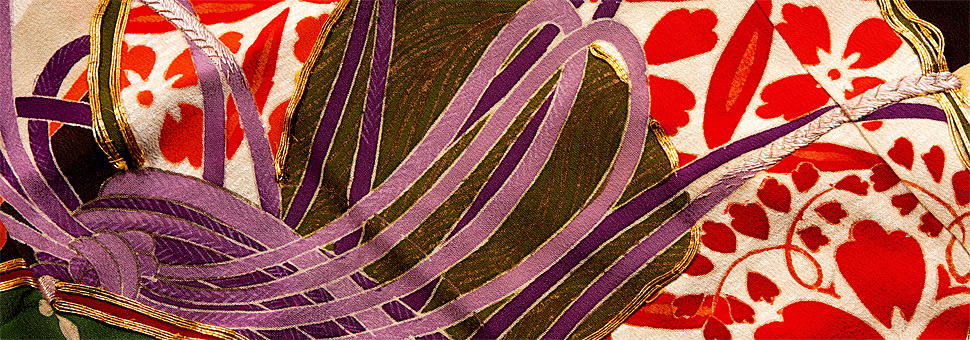
They were acquired by a Dutch gentleman in the mid-1930s. The name of the owner is written on one of the labels (C.A. Wiessing). The garments are indicative of a unique cultural period that occurred during the 19th and early 20th century.
Gathering information on the Maison Cumberland has proven challenging, with many details lost through time - it’s been satisfying to find traces of its former success left behind in advertisements, postal addresses and historical literature. The popularity of British tailoring reflects the hegemony of the British Empire during its height in the 19th century, dominating popular fashion trends both across the Channel and throughout the world.
 Waistcoat, Maison R. Cumberland, Paris, dated 16 May 1935 (TRC 2021.3360b). The label indicates the waistcoat was made for Mr C.A. Wiessing.Prior to this, in the 18th century, France had taken the stage as the global fashion powerhouse. However, the French Revolution gave Britain’s tailoring industry a chance to develop, fuelled by the limited contact between France and Britain during the Napoleonic Wars. This expansionist moment is well articulated in an excerpt from a speech given by Conservative MP John Wheeler to the British parliament on the 5th of November 1987 regarding Savile Row, the traditional centre of British high class men's tailoring.
Waistcoat, Maison R. Cumberland, Paris, dated 16 May 1935 (TRC 2021.3360b). The label indicates the waistcoat was made for Mr C.A. Wiessing.Prior to this, in the 18th century, France had taken the stage as the global fashion powerhouse. However, the French Revolution gave Britain’s tailoring industry a chance to develop, fuelled by the limited contact between France and Britain during the Napoleonic Wars. This expansionist moment is well articulated in an excerpt from a speech given by Conservative MP John Wheeler to the British parliament on the 5th of November 1987 regarding Savile Row, the traditional centre of British high class men's tailoring.
‘Given the nature of our hostile climate, tailoring has been a feature of our country for some time. We all like to wear clothes… it was the French Revolution that gave the British tailor the opportunity to lead men's fashion’.
The garments now accessed in the TRC Collection should thus be understood as a visual signifier of the influence of power seeping into fashion, the human trait of copying those who are in control and of the reach of the British Empire to places both near and far.
British tailors were also sought after due to their association with the British royal family and 'upper class' living. In this period, demand for British tailoring peaked in Paris, heralding a period of British tailoring houses opening across the city. A good example, apart from the Maison Cumberland, is the House of Worth, established in Paris in 1858 by Charles Frederick Worth.
 Advertisement for the Maison Cumberland, with establishments in London and Paris. 1862. The Cumberland firm was established in London in 1830, with its presence recorded on Beckenham High Street (London) in 1862. In the same year, Cumberland also occupied a location in Paris, along the Rue Scribe. When exactly they opened their doors in Paris is unknown. Harper's Handbook for Travellers in Europe, written by William Pembroke Fetridge in 1868, mentions that ‘Mr. Cumberland is celebrated for his accuracy in fitting, and suits all tastes as to style’.
Advertisement for the Maison Cumberland, with establishments in London and Paris. 1862. The Cumberland firm was established in London in 1830, with its presence recorded on Beckenham High Street (London) in 1862. In the same year, Cumberland also occupied a location in Paris, along the Rue Scribe. When exactly they opened their doors in Paris is unknown. Harper's Handbook for Travellers in Europe, written by William Pembroke Fetridge in 1868, mentions that ‘Mr. Cumberland is celebrated for his accuracy in fitting, and suits all tastes as to style’.
It's clear from this that, soon into its history, Cumberland garnered a reputation not only locally in Britain, but also in Paris. During the 19th and early 20th century, Cumberland remained one of the most renowned tailoring houses in Paris, before merging with F. Disslin and Opelka in the mid-20th century, and later with Daric - De Backer. There is little to no trace of Disslin-Opelka-Cumberland-Daric-De Backer in the public domain after 1976.
 Map of Paris with the various addresses of the Maison Cumberland in the 19th and early 20th century. Note: years listed do not indicate first day of occupation but rather the year of publishing of historical sources which provide evidence of address. Cumberland occupied different spaces in Paris for well over one hundred years, with evidence of its existence in France superseding that of its operation in Britain. The frequent movement of the tailoring house in comparison to its cousins in Savile Row suggests ephemerality and that perhaps, in Paris, British tailoring was more of a fad than a permanent long-standing tradition. One address of the Maison Cumberland however that remained the same was 3, Rue Scribe. It is mentioned in a 1862 advertisement, and again on the label of one of the jackets now in the TRC collection.
Map of Paris with the various addresses of the Maison Cumberland in the 19th and early 20th century. Note: years listed do not indicate first day of occupation but rather the year of publishing of historical sources which provide evidence of address. Cumberland occupied different spaces in Paris for well over one hundred years, with evidence of its existence in France superseding that of its operation in Britain. The frequent movement of the tailoring house in comparison to its cousins in Savile Row suggests ephemerality and that perhaps, in Paris, British tailoring was more of a fad than a permanent long-standing tradition. One address of the Maison Cumberland however that remained the same was 3, Rue Scribe. It is mentioned in a 1862 advertisement, and again on the label of one of the jackets now in the TRC collection.
With thanks to Reginald-Jerome de Mans, author of Swan Songs. Souvenirs of Paris Elegance (2021).
Erica Prus, Central St Martins, University of the Arts, London, 1 January 2022,










